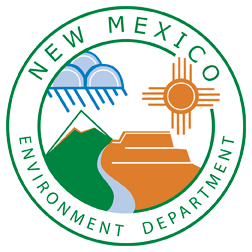The Technical Services team offers compliance and capacity assessment assistance to public water systems.
Area Wide Optimization Program
The New Mexico Area Wide Optimization Program helps water systems voluntarily improve drinking water quality beyond compliance levels to enhance public health protection.
The primary goal of the program is to assist water systems to maximize public health protection through optimization of existing water treatment and distribution facilities without major capital improvements. Optimization of the water system is achieved through enhanced process monitoring and control using existing staff and facilities. Currently NM’s AWOP focuses on optimizing conventional surface water treatment performance which is measured relative to the following optimization goals.
The Drinking Water Bureau has an Area Wide Optimization Program designed to assist surface water systems to achieve optimization goals. The three (3) major components of the AWOP are Comprehensive Performance Evaluations (CPEs), Comprehensive Technical Assistance (CTA) and Performance-Based Training (PBTs).
CPEs are a thorough review and analysis of a facility’s design capabilities and associated administrative, operational, and maintenance practices as they relate to achieving optimum performance from the facility. The primary objective is to determine if significant improvements in the treatment performance can be achieved without major capital expenditures.
The CTA was developed as a methodology to address the unique combination of factors that limit an individual facility’s performance through use of a consistent format that could be applied at multiple utilities. Actual implementation of each CTA is site-specific, and the combination of tools used is at the discretion of the water system.
Similar to CTA, PBT was developed as a methodology to address the common factors that limit an individual facility’s performance and is implemented with several water systems simultaneously.
New Mexico AWOP Optimized Performance Goals for Conventional Surface Water Treatment
To achieve optimized performance and to provide the maximum protection to public health, the following goals are required:
Minimum Data Monitoring Requirements
- Daily raw water turbidity
- Settled water turbidity at 4-hour time increments from each sedimentation basin
- On-line (continuous) turbidity from each filter
- One filter backwash profile each month from each filter
Individual Sedimentation Basin Performance Goals
- Settled water turbidity less than 1 NTU 95% of the time when annual average raw water turbidity is less than or equal to 10 NTU
- Settled water turbidity less than 2 NTU 95% of the time when annual average raw water turbidity is greater than 10 NTU
Individual Filter Performance Goals
- Filtered water turbidity less than 0.1 NTU 95% of the time (excluding 15-minute period following backwashes) based on the maximum values recorded during 4-hour time increments
- Maximum filtered water measurements of 0.3 NTU
- Initiate filter backwash immediately after turbidity breakthrough has been observed and before effluent turbidity exceeds 0.1 NTU
- Maximum filtered water turbidity following backwash of less than 0.3 NTU, returning to 0.1 NTU within 15 minutes
Disinfection Performance Goals
- CT values to achieve required log inactivation for Giardia and viruses
What are the benefits of optimizing conventional surface water treatment?
The primary benefit for systems participating in AWOP is improved performance of drinking water treatment plants, which increases protection against waterborne disease. Any system that is having difficulty in meeting compliance requirements should participate in this program. Also, any system that is interested in increasing their technical capacity in order to meet the conventional surface water treatment optimization performance goals are encouraged to participate. Other benefits from AWOP participation include:
- Systems receive the tools needed to comply with SDWA rules such as the Long-Term 2 Enhanced Surface Water Treatment Rule, Stage 2 Disinfectants/Disinfection Byproducts Rule, and the Groundwater Rule.
- System staff better understand their roles in treatment optimization and public health protection.
- A system operator’s ability to apply new technical concepts is enhanced, resulting in sustained improvements in plant operation.
- New communication and networking opportunities for water system staff are created with multi-system training events.
- The useful life of existing infrastructure is prolonged by optimizing performance, reduces the need to invest resources in new facilities to achieve compliance.
How do systems get involved?
Participation in this program is voluntary, but has proven very successful in other states that have chosen to participate in the program. Once active, expect to receive specialized training about AWOP, how to adopt and achieve the optimized performances goals, data integrity, routine and special studies to address performance limiting factors, and participate in a Comprehensive Performance Evaluation.
Again, participation in this program is voluntary, but has proven very successful in increasing the technical capacity of water systems other states. Participation and training is free to water systems, however, it will require each eligible system to formally adopt the optimization goals.

